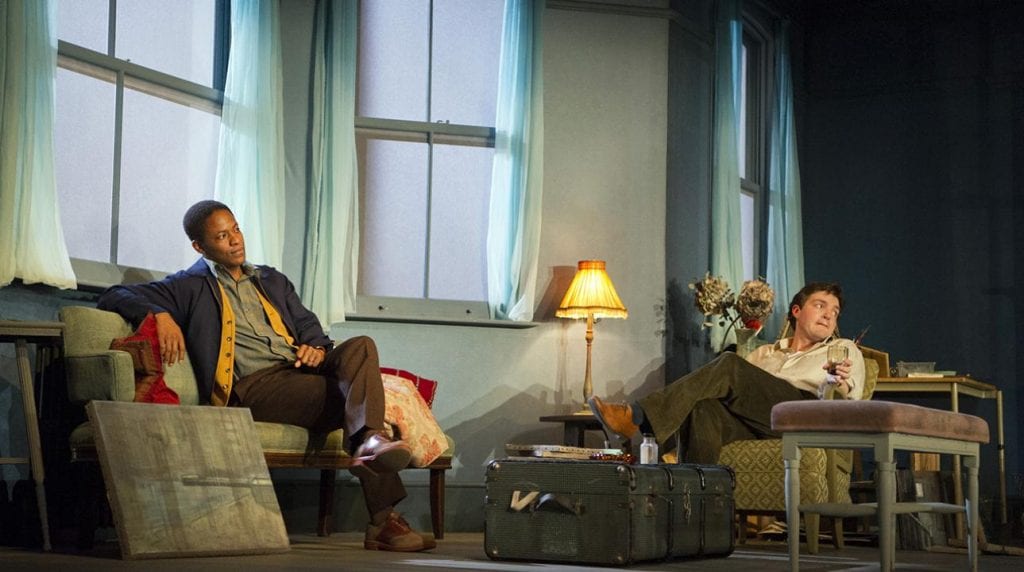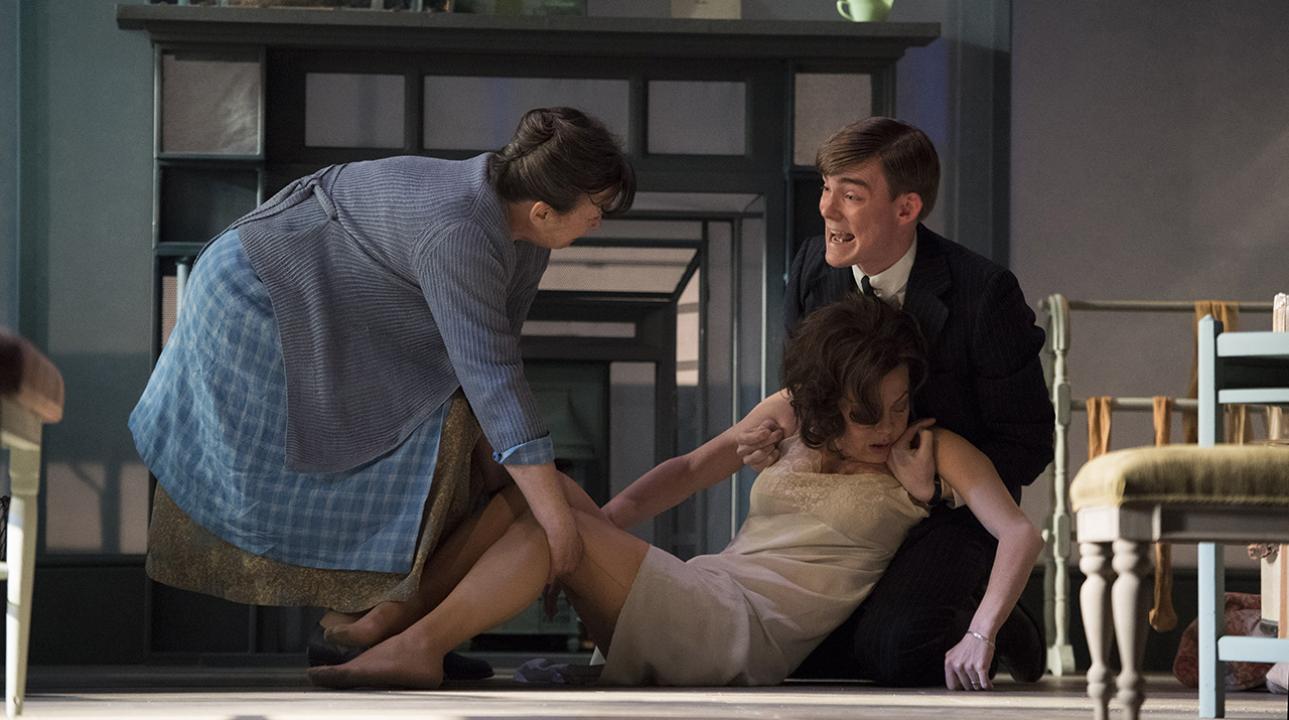The Deep Blue Sea is one of many works written by Terence Rattigan, who partly bases the play on his secret relationship with Kenny Morgan. He weaves allusions to the end of their relationship into the plot too, with critics often claiming that his work is autobiographical. Rattigan existed in a prejudiced and old-fashioned world, keeping his homosexuality secret from everyone but his closest friends.
With the autobiographical nature of The Deep Blue Sea in mind, the show becomes all the more realistic and hard-hitting. Directed by Carrie Cracknell, the play is set in a small Ladbroke Grove flat, in 1952.

At the beginning, we find our protagonist, Hester Collyer (Helen McCrory) in a state of unconsciousness. Her neighbours rescue her, realising that she was attempting to gas herself but failed. umerous flashbacks follow, but the first shows her leaving her husband, Sir William Collyer (Peter Sullivan), who is a respected High Court Judge. Embarking on an affair with an RAF pilot, Freddie Page (Tom Burke), she heads down a path of self-destruction.
Back in the present day, Hester is found to have been driven to attempt suicide because Freddie forgot her birthday. Despite the constant opening of her flat door, and numerous visitors checking on her, solitude is clear. Her neighbours seem to want to help her and remove her from her troubled state of existence. However, no one except Dr Miller, a man who sympathises with her, can really help. Sadly, the visit from her ex-husband does not resolve their issues and love fades in and out. The door becomes a metaphor for her chance at happiness constantly being closed on her.
McCrory, Sullivan and Burke speak in an almost constant stream of dialogue. It emphasises the frenetic nature of Hester’s mental state. However, you find yourself leaning forward, wanting to catch every word, listening intently. Freddie and William offer Hester two entirely different lives, both from different social standings. William’s upper class speech and attire adds to the stiff upper lip effect, while Freddie is far more rough and ready.
The apartment is almost bare. McCrory appears as an ethereal presence, with Tom Scutt’s set making scenes ghostly. The open plan setting mixed with the high ceilings and open window are symbolic of desperation. The show’s set is a physical manifestation of Hester’s mental health, as empty and lonely as she appears to be. The discussion of mental health in a time when suicide was illegal is both interesting and refreshing.
Clearly, the overriding message of the play is that Hester is “caught between the devil and the deep blue sea”. Every aspect of the play, even staging, puts mental health under the spotlight, constantly offering an insight into depression and low mental state. Cracknell’s staging of Rattigan’s masterpiece is therefore highly effective. It is captivating from the start, and lighting, ominous music and staging is superb the whole way through the piece.
The Deep Blue Sea is a breathtakingly sad, yet sometimes amusing, take on mental health and doomed love- I think that it should be watched by all. Rattigan’s own personal struggles live on through the play, and remind audience members of the importance of looking out for friends.
Terence Rattigan’s troubling yet humorous play is now streaming on the National Theatre’s YouTube channel as part of their fundraising initiative, National Theatre At Home.
Words by Olivia Devereux-Evans.
